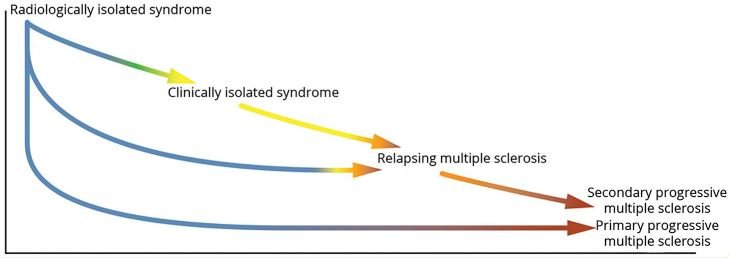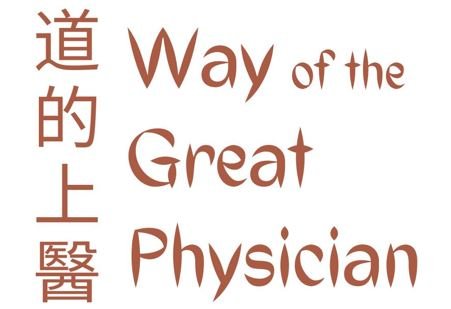Yes! Chinese Medicine has been shown to help those with multiple sclerosis manage symptoms and delay relapse. But first, what is Multiple Sclerosis? Multiple sclerosis (MS) is a chronic neurological disease that affects the central nervous system (CNS). It is a complex condition characterized by the immune system mistakenly attacking the protective covering of nerve fibers, called myelin. As a result, communication between the brain, spinal cord, and the rest of the body becomes disrupted, leading to a wide range of symptoms that can vary in severity and duration. In this article, we will delve into the pathogenesis, risk factors, diagnosis, types, symptoms, triggers, treatment options, and the effects of Chinese medicine associated with multiple sclerosis.
Pathogenesis
The exact cause of multiple sclerosis is still unknown, but researchers believe it to be a combination of genetic and environmental factors. It is considered an inflammatory autoimmune disease, meaning the immune system mistakenly targets healthy tissues in the body (1,2). In the case of MS, immune cells attack the myelin sheath that surrounds nerve fibers, leading to inflammation and damage. Over time, this can result in the formation of scar tissue (sclerosis) in multiple areas of the CNS, disrupting the normal flow of electrical impulses.
Risk Factors
Although the precise triggers of multiple sclerosis remain unclear, several factors have been associated with an increased risk of developing the condition:
- Genetic Predisposition – Having a family member with MS increases the likelihood of developing the disease (3).
- Gender – Women are approximately two to three times more likely to develop MS than men (4).
- Age – MS often first presents itself between the ages of 20 and 40, although it can occur at any age (3).
- Geographic Location – MS is more common in regions farther from the equator, suggesting a potential link to vitamin D deficiency (4,5,6).
- Viral Infections – The trigger to developing an autoimmune disease is an infection that one’s body first treats and then goes wild attacking itself. The most common virus linked to MS is the Epstein-Barr virus (7).
- Concussions – Repeated head trauma in adolescence is associated with increased risk of developing MS later in life (8).
- Other Autoimmune Disorders – Those with other autoimmune disorders, such as type 1 diabetes, have a greater risk of developing MS (9).
Diagnosis
Once a patient experiences at least one episode of MS-like symptoms lasting hours or days, doctors use an MRI to look for lesions on the spinal cord and brain. Once a lesion has been identified, the diagnosis of Multiple Sclerosis is given. Another way MS is diagnosed is by extracting some Cerebral Spinal Fluid (CSF), which surrounds the brain and spinal cord. Once extracted, it is tested for oligoclonal banding – antibodies that indicate inflammation of the central nervous system (10).
Types of Multiple Sclerosis
Multiple Sclerosis has four main phenotypes.
Clinically Isolated Syndrome
This is the first attack of MS. It lasts at least 24 hours and usually leads to a formal diagnosis. The symptoms experienced do not predict how the disease will progress (11).
Relapsing-Remitting MS (RRMS)
This is the most common type, characterized by clearly defined relapses or attacks, followed by periods of partial or complete recovery. The disease does not progress between attacks (11).
Secondary Progressive MS (SPMS)
Following an initial period of relapsing-remitting symptoms, SPMS represents a phase in which symptoms worsen steadily over time, with or without relapses. There is no specific marker of when RRMS becomes SPMS, but is usually 10-20 years after the disease onset (11).
Primary Progressive MS (PPMS)
This form of MS involves a steady progression of symptoms from the onset, without distinct relapses or remissions. PPMS starts around age 40 and more commonly results in physical disability (11).

Symptoms and Triggers
The symptoms of MS can vary widely from person to person and depend on the areas of the CNS affected. Common symptoms include fatigue, difficulty walking, numbness or tingling, muscle weakness, problems with coordination and balance, blurred vision, dizziness, cognitive changes, and emotional disturbances (11). Triggers such as stress, infections, temperature changes, and certain medications may exacerbate symptoms (13).
Treatment
While there is currently no cure for multiple sclerosis, several treatment options are available to manage symptoms, slow disease progression, and improve quality of life. Doctors of western medicine may treat MS with the following:
Disease-Modifying Therapies (DMTs)
These medications suppress the immune system to help reduce the frequency and severity of relapses, control inflammation, and slow down the accumulation of disability (14).
Symptomatic Treatments
Various medications, therapies, and lifestyle adjustments can be employed to alleviate specific symptoms such as fatigue, muscle spasms, pain, and bladder or bowel dysfunction. Examples include botulinum toxin (botox) injections into the muscle wall of the bladder to prevent incontinence and antidepressants to support mental health (15).
Rehabilitation Programs
Physical therapy, occupational therapy, and speech therapy can help individuals regain or maintain function and independence (15).
Supportive Care
Psychological support, counseling, and support groups can be valuable for individuals and their families in coping.
Chinese Medicine for Multiple Sclerosis
Chinese Medicine has been shown to effectively support those with multiple sclerosis, benefiting both physical health, mental health, and overall quality of life. When hypothesizing what acupuncture specifically does to impact MS, Dr. Faezeh Khodaie states that the “mechanism of acupuncture on demyelination could be due to the reduction in the expression of inflammatory cells, upregulation of anti-inflammatory cells, and consequently reduction in CNS inflammation and counteracting demyelination” (16). By reducing the inflammation, acupuncture can help alleviate many of the MS symptoms, including:
Pain Management
Many individuals with MS experience pain, such as muscle spasms, joint pain, and nerve pain. Acupuncture has been shown to stimulate the release of endorphins, the body’s natural pain-relieving chemicals, which can help reduce pain and promote relaxation (17).
Fatigue
After having been measured using the Modified Fatigue Impact Scale (MFIS), receiving acupuncture 8 times, and being measured again, individuals found a significant reduction in their fatigue (16).
Disability & Relapse
In a study of 42 RRMS patients received either acupuncture or shallow needling 10 times in 2 weeks every other 2 weeks for 3 months. The Expanded Disability Status Score (EDSS) significantly decreased for those who received acupuncture but was found to increase again after only 12 months, indicating that acupuncture is powerful when applied consistently, but needed regularly to maintain positive affect. In the same study it was found that both groups experienced delayed relapse of symptoms, even up to 2 years later (16,18).
Gait
In one study, a “25 foot walk significantly improved immediately after true acupuncture compared to sham acupuncture (p=0.00)” (16,19)
Other areas acupuncture and Chinese herbal medicine were able to support were in Quality of Life, mental health, spasms, and more (16). The systematic reviews and meta-analyses all conclude that acupuncture and herbal Chinese medicine effectively treat MS symptoms, though more research with larger sample sizes must be done to better verify medical claims.
Chinese medicine is able to support those with multiple sclerosis largely due to its different paradigm and approach to the body. As Frans Johansson said, “The best ideas emerge when very different perspectives meet.” Chinese medical practitioners may approach MS as a condition where the Wei Qi (defensive Qi), which circulates on the outside of the body and protects from invading pathogens, is disrupted, allowing the pathogen to attack deeper. In this case, the protective layer is the myelin sheath covering the nerves, allowing the electrical signals to quickly fire and travel throughout the body. When the boundary is attacked, MS relapse symptoms occur.
Another approach is to see MS as dampness obstructing the energy meridian channels (“causing heaviness, numbness, and tingling”) and Kidney and Liver Yin Deficiency (“causing dizziness, problems with vision, difficulty in urination and weakness of the muscles”) (20). Further explanation of these terms can be found in future articles.
Acupuncture effects can vary from person to person, and the number and frequency of sessions required may vary depending on individual needs. It’s advisable to seek a qualified and licensed acupuncturist who has experience working with individuals with MS to ensure safe and effective treatment.
This article is based on a question by a friend. If you want to know if Chinese Medicine can help treat a certain condition, don’t hesitate to message me. If you have any other questions about Chinese Medicine (acupuncture, herbs, history, approaches to certain conditions, etc.) or how it can relate to principles of the gospel of Jesus Christ, I would love to research them and write about them in a future blog article.
Sources:
- Weiner HL. Multiple sclerosis is an inflammatory T-cell-mediated autoimmune disease. Arch Neurol 2004; 61:1613.
- Roach ES. Is multiple sclerosis an autoimmune disorder? Arch Neurol 2004; 61:1615.
- Olek MJ, Mowry E. Pathogenesis and epidemiology of multiple sclerosis. UpToDate: 2023. https://www-uptodate-com.nunm.idm.oclc.org/contents/pathogenesis-and-epidemiology-of-multiple-sclerosis?search=multiple%20sclerosis&source=search_result&selectedTitle=5~150&usage_type=default&display_rank=5#H548437137
- Alonso A, Hernán MA. Temporal trends in the incidence of multiple sclerosis: a systematic review. Neurology 2008; 71:129.
- Simpson S Jr, Wang W, Otahal P, et al. Latitude continues to be significantly associated with the prevalence of multiple sclerosis: an updated meta-analysis. J Neurol Neurosurg Psychiatry 2019; 90:1193.
- Mokry LE, Ross S, Ahmad OS, et al. Vitamin D and Risk of Multiple Sclerosis: A Mendelian Randomization Study. PLoS Med 2015; 12:e1001866.
- Jacobs BM, Giovannoni G, Cuzick J, Dobson R. Systematic review and meta-analysis of the association between Epstein-Barr virus, multiple sclerosis and other risk factors. Mult Scler 2020; 26:1281.
- Montgomery S, Hiyoshi A, Burkill S, Alfredsson L, Bahmanyar S, Olsson T. Concussion in adolescence and risk of multiple sclerosis. Ann Neurol. 2017;82(4):554-561. doi:10.1002/ana.25036
- Nielsen NM, Westergaard T, Frisch M, et al. Type 1 diabetes and multiple sclerosis: A Danish population-based cohort study. Arch Neurol 2006; 63:1001.
- Campellone JV. CSF oligoclonal banding. Mount Sinai: 2021. https://www.mountsinai.org/health-library/tests/csf-oligoclonal-banding
- Olek MJ, Howard J. Clinical presentation, course, and prognosis of multiple sclerosis in adults. UpToDate: 2022. https://www-uptodate-com.nunm.idm.oclc.org/contents/clinical-presentation-course-and-prognosis-of-multiple-sclerosis-in-adults?search=multiple%20sclerosis&source=search_result&selectedTitle=2~150&usage_type=default&display_rank=2#H605007557
- Vollmer TL, Nair KV, Williams IM, Alvarez E. Multiple Sclerosis Phenotypes as a Continuum: The Role of Neurologic Reserve. Neurol Clin Pract. 2021;11(4):342-351. doi:10.1212/CPJ.0000000000001045 https://www.ncbi.nlm.nih.gov/pmc/articles/PMC8382415/
- Mohr DC, Hart SL, Julian L, et al. Association between stressful life events and exacerbation in multiple sclerosis: a meta-analysis. BMJ 2004; 328:731
- Olek MJ, Mowry E. Disease-modifying therapies for multiple sclerosis: Pharmacology, administration, and adverse effects. UpToDate: 2023. https://www-uptodate-com.nunm.idm.oclc.org/contents/disease-modifying-therapies-for-multiple-sclerosis-pharmacology-administration-and-adverse-effects?search=multiple%20sclerosis%20disease%20modifying%20therapies&source=search_result&selectedTitle=1~150&usage_type=default&display_rank=1#H1124735147
- Olek MJ, Narayan RN, et al. Symptom management of multiple sclerosis in adults. UpToDate: 2022. https://www-uptodate-com.nunm.idm.oclc.org/contents/symptom-management-of-multiple-sclerosis-in-adults?search=multiple%20sclerosis%20treatment&source=search_result&selectedTitle=4~150&usage_type=default&display_rank=4#H4
- Khodaie F, Abbasi N, Kazemi Motlagh AH, Zhao B, Naser Moghadasi A. Acupuncture for multiple sclerosis: A literature review. Mult Scler Relat Disord. 2022;60:103715. doi:10.1016/j.msard.2022.103715
- Liu Y, Wang H, Wang X, et al. The mechanism of effective electroacupuncture on T cell response in rats with experimental autoimmune encephalomyelitis. PLoS One. 2013;8(1):e51573. doi:10.1371/journal.pone.0051573
- Song L, Zhou QH, Wang HL, et al. Chinese herbal medicine adjunct therapy in patients with acute relapse of multiple sclerosis: A systematic review and meta-analysis. Complement Ther Med. 2017;31:71-81. doi:10.1016/j.ctim.2017.02.004
- Criado MB, Santos MJ, Machado J, Gonçalves AM, Greten HJ. Effects of Acupuncture on Gait of Patients with Multiple Sclerosis. J Altern Complement Med. 2017;23(11):852-857. doi:10.1089/acm.2016.0355
- Stephenson C. The Acupuncturist’s Guide to Conventional Medicine: Second Edition. Singing Dragon: London, UK and Philadelphia, PA; 2017: 349









